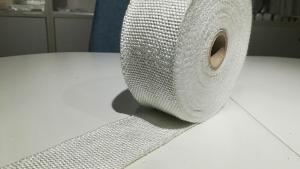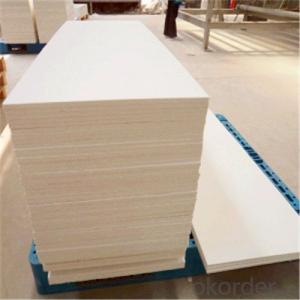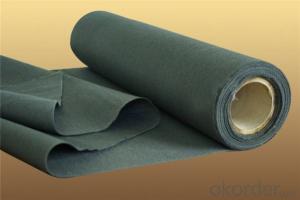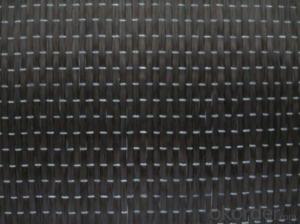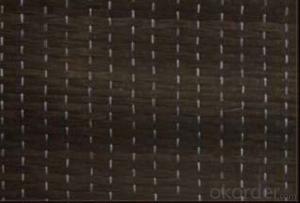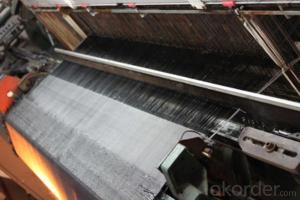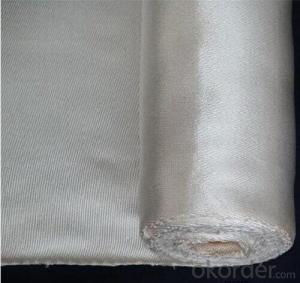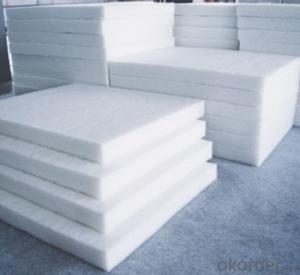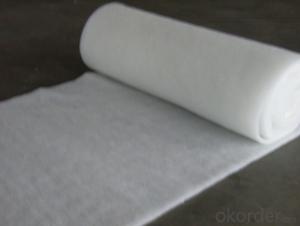Fiberglass Fabric / Fiberglass Cloth / Fiberglass Rope / Fiberglass Tape
- Loading Port:
- Shanghai
- Payment Terms:
- TT or LC
- Min Order Qty:
- 200 m²
- Supply Capability:
- 100000000 m²/month
OKorder Service Pledge
OKorder Financial Service
You Might Also Like
Fiberglass Fabric / Fiberglass Cloth / Fiberglass Rope / Fiberglass Tape
- Textured fiberglass textiles are composed of cloth, tape, twisted or braided rope etc.
- Having a maximum continuous operating temperature of 550℃.
Advantage of Textured Fiberglass Textiles
- Low thermal conductivity
- Electricity insulation
- Corrosive resistance
Application of Textured Fiberglass Textiles
Textured fiberglass textiles can be performed in process industries as fire curtains, gaskets or sealing in kiln, furnace and heaters etc. Application has been extended to the building industry as reinforcement material.
Size of Textured Fiberglass Cloth
Thickness:0.8mm-4mm (0.032"-0.157")
Width:800mm-1830mm (31.5"-72.05")
Size of Textured Fiberglass Tape
Thickness:0.8mm-6mm (0.032"-0.236)
Width:13mm-750mm(0.512"29.53")
Size of Textured Fiberglass Twisted Rope
Diameter.3mm-50mm(1/8"-2)
Size of Textured Fiberglass Round Rope
Diameter:4mm-50mm(4/25"-2")
Size of Textured Fiberglass Square Rope
Diameter:4mm-50mm(4/25"-2)
Photo of Fiberglass Texitle
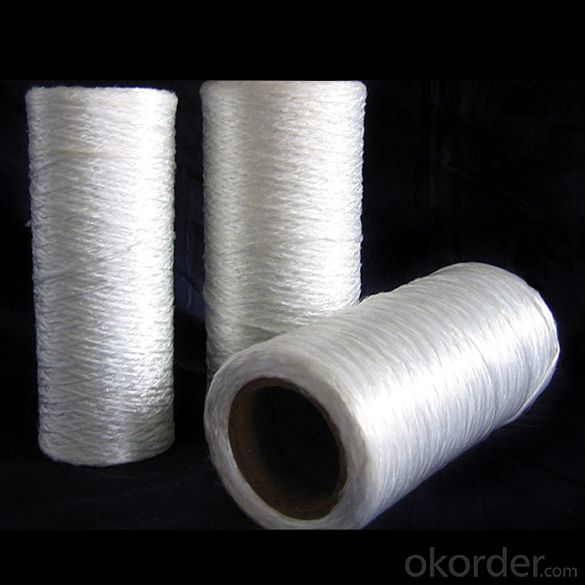


- Q:Can glass fiber textile be used in prosthetics?
- Prosthetics can indeed utilize glass fiber textiles. These textiles possess impressive characteristics such as strength, lightness, and high tensile strength, rendering them suitable for a range of applications, including prosthetics. They are capable of reinforcing and providing structural support to artificial limbs, enabling them to endure the mechanical stresses and strains encountered during movement. Moreover, glass fiber textiles can be shaped and molded to conform to the body's contours, ensuring a comfortable and personalized fit for the wearer. By incorporating glass fiber textiles into prosthetics, their durability, functionality, and overall performance can be enhanced, ultimately leading to an improved quality of life for individuals with limb loss or impairment.
- Q:How do glass fiber textiles perform in terms of weight?
- Glass fiber textiles are known for their lightweight nature. They have a very low weight-to-strength ratio, making them highly advantageous in applications where weight reduction is crucial, such as aerospace and automotive industries.
- Q:Can glass fiber textiles be woven?
- Yes, glass fiber textiles can be woven.
- Q:Can glass fiber textile be used in sporting equipment?
- Yes, glass fiber textile can be used in sporting equipment. It is commonly used in the construction of items such as tennis rackets, hockey sticks, and bicycle frames due to its high strength, durability, and lightweight properties. Glass fiber textile provides excellent stiffness and flexibility, making it suitable for enhancing performance and improving player control in various sports.
- Q:Can glass fiber textiles be used in automotive seat covers?
- Glass fiber textiles, renowned for their remarkable strength, durability, and ability to withstand high temperatures, can indeed be employed in automotive seat covers. These textiles are well-suited for automotive purposes due to their exceptional insulation properties and resistance to both chemicals and UV radiation. Moreover, they can offer additional comfort and support to users by incorporating breathability and moisture-wicking features. In summary, the utilization of glass fiber textiles in automotive seat covers presents an opportunity for automotive manufacturers to enhance the seats' longevity and performance, rendering them a practical choice.
- Q:Is it OK to make a model with fiberglass cloth and paint brush on the model?
- With ab better, more suitable for wood stick
- Q:How do glass fiber textiles affect energy consumption?
- The utilization of glass fiber textiles can have a significant impact on energy consumption in various ways. First and foremost, glass fiber textiles are renowned for their exceptional insulating properties. When applied to buildings, they effectively minimize heat transfer, resulting in reduced energy requirements for heating and cooling. This insulation capability assists in maintaining a comfortable indoor temperature, thereby decreasing the constant reliance on heating and air conditioning systems. Furthermore, glass fiber textiles also play a pivotal role in the automotive sector. When incorporated as reinforcement in composite materials for vehicle components, they contribute to a lighter weight and enhanced fuel efficiency. The decreased vehicle weight necessitates less energy for propulsion, ultimately leading to lowered fuel consumption and diminished greenhouse gas emissions. Additionally, glass fiber textiles find extensive applications in the manufacturing of wind turbine blades. These textiles provide durability and strength to the blades, enabling them to withstand harsh weather conditions and effectively generate electricity. By facilitating the production of more reliable and efficient wind turbines, glass fiber textiles promote the utilization of renewable energy sources, thereby reducing reliance on fossil fuels and overall energy consumption. In conclusion, glass fiber textiles have a positive impact on energy consumption by improving building insulation, enhancing vehicle fuel efficiency, and enabling the generation of renewable energy. Their utilization across various industries contributes to the reduction of energy consumption and the promotion of sustainability.
- Q:Can glass fiber textiles be used in air ducts?
- Indeed, air ducts can make use of glass fiber textiles. These textiles are often employed as insulation materials in HVAC systems, which encompass air ducts. They possess outstanding thermal qualities that offer insulation, thereby preventing heat transfer and preserving the desired temperature within the ducts. Additionally, glass fiber textiles possess resistance against moisture, mold, and mildew, rendering them highly suitable for deployment in environments characterized by elevated humidity levels. Furthermore, due to their lightweight nature and ease of installation, they present a practical choice for air ducts. Taken as a whole, glass fiber textiles represent a fitting option for insulating and safeguarding air ducts across various HVAC applications.
- Q:Can glass fiber textile be used in architectural applications?
- Yes, glass fiber textile can be used in architectural applications. It is commonly used for creating lightweight and flexible structures such as tensile membranes, facades, and canopies. Glass fiber textile offers excellent strength, durability, and transparency, making it suitable for enhancing the aesthetics and functionality of architectural designs. It is also resistant to weather and environmental conditions, making it a viable choice for long-lasting architectural applications.
- Q:How do glass fiber textiles resist abrasion?
- The unique properties and construction of glass fiber textiles allow them to withstand abrasion. Firstly, glass fibers are renowned for their exceptional strength and durability. They consist of extremely fine strands of glass that are tightly woven or knitted together to form the textile, creating a robust and solid structure capable of enduring various forms of wear and tear, including abrasion. Moreover, glass fiber textiles possess a smooth surface that hinders external forces from causing friction and damage. In contrast to materials with rough or uneven surfaces, glass fibers exhibit a consistent and uniform texture, reducing the likelihood of abrasion. Furthermore, glass fibers exhibit a high resistance to chemicals and moisture, which further contributes to their ability to resist abrasion. Chemicals and moisture often weaken or degrade materials over time, rendering them more susceptible to abrasion. However, glass fiber textiles retain their integrity and strength even when exposed to these elements, minimizing the risk of abrasion. Lastly, glass fiber textiles can be enhanced with additional protective coatings or treatments to augment their resistance to abrasion. These coatings provide an extra layer of defense against external forces and extend the textile's lifespan. To summarize, the resistance of glass fiber textiles to abrasion stems from their strong and durable construction, smooth surface, resistance to chemicals and moisture, and the potential for additional protective coatings. Consequently, glass fiber textiles are an excellent choice for applications that require abrasion resistance.
1. Manufacturer Overview |
|
|---|---|
| Location | |
| Year Established | |
| Annual Output Value | |
| Main Markets | |
| Company Certifications | |
2. Manufacturer Certificates |
|
|---|---|
| a) Certification Name | |
| Range | |
| Reference | |
| Validity Period | |
3. Manufacturer Capability |
|
|---|---|
| a)Trade Capacity | |
| Nearest Port | |
| Export Percentage | |
| No.of Employees in Trade Department | |
| Language Spoken: | |
| b)Factory Information | |
| Factory Size: | |
| No. of Production Lines | |
| Contract Manufacturing | |
| Product Price Range | |
Send your message to us
Fiberglass Fabric / Fiberglass Cloth / Fiberglass Rope / Fiberglass Tape
- Loading Port:
- Shanghai
- Payment Terms:
- TT or LC
- Min Order Qty:
- 200 m²
- Supply Capability:
- 100000000 m²/month
OKorder Service Pledge
OKorder Financial Service
Similar products
New products
Hot products
Hot Searches
Related keywords
